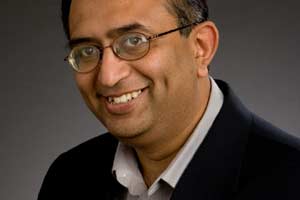Today the need to overhaul the IT infrastructure has become a kind of ‘work in progress’ phenomena for every major enterprise and government entity. There is continuous rise in the number of data hungry users and applications, there is optimism around emerging technologies such as cloud and data in itself has become an asset and opportunity—hence it is not surprising that CIOs, CTOs and government IT heads are now keenly looking for a flawless IT architecture for compute, data storage and networking.
Few years ago, the American technology firm VMware introduced the concept of software defined datacentre (SDDC) into the industry, which basically allows a company to manage typical hardware and devices of the traditional datacentre by intelligent software systems, leading to lower cost, better security model and faster deployment of applications and services for the end users. The concept has started to gain traction and now the company has about several thousand customers worldwide including in India that are at various stages of deployment.
Traditionally, India has been about 4-5 years behind any technology adoption. However, with some of the emerging technologies including SDDC, the country is not probably more than 12 months behind most of the developed world. In fact, in the Internet of Things (IoT) space, India has a chance to make the mark without trying to play catch-up. And, firms such as VMware are aware of these potentials and keen to tap the opportunities. Recently, the company launched two products—EVO:RAIL and vCloud Suite in India. Both of these are in its early days, but the company seems to be encouraged by the early uptake and is now looking to expand the footprints across all the enterprises and the government departments for its SDDC offerings.
Primarily, the demand for SDDC is coming from customers who are more interested in the automation such as IT/ITeS, financial service, telcos etc. So far, SDDC is predominantly a top-end enterprise play with IT/ITeS leading the path, followed by financial services and now telecom is also moving at a rapid pace to adopt it. Company officials inform that for VMware government is also a key customer segment and they do have government oriented programmes.
“The government can be an enormous catalyst for these emerging technologies because it can take a long term view of infrastructure needed for Digital India and Smart Cities. In addition, the government does things with a scale that can spur a whole new range of innovation,” Raghu Raghuram, executive vice-president, Software-Defined Data Center Division, VMware, told FE.
Apart from government, the company sees huge potential in telecom sector as telcos have been carrying the legacy UNIX environment. However as they move to commodity driven cloud-based environment, SDDC is likely to be the architectural backbone. “Today telecom companies are dealing with large cost structure as network is highly appliance based. If they move to SDDC architecture, they will have huge cost saving and economies of scale to grow. It is only possible when you have an underlying infrastructure on which both IT applications and network function applications can be run,” said Arun Parameswaran, managing director, VMware India.
With market opportunity for datacentre industry in India maturing with the growing prevalence of 3G, broadband connectivity and emergence of disruptive technologies like cloud and virtualisation, the industry is expecting a surge in the demand for datacentre and its virtualisation. Betting high on India, in April 2015, VMware opened a 438,000 square foot facility in Bangalore with a total investment of $120 million, to cater to global and local demand for mobile and cloud solutions. The company is also working with some of the start-ups for technological innovation.
Sooner or later, SDDC will have its way into the existing IT architecture of the government and enterprises but the sooner an organisation finds an isolated problem to deploy them, the quicker it is likely to grow and scale.
